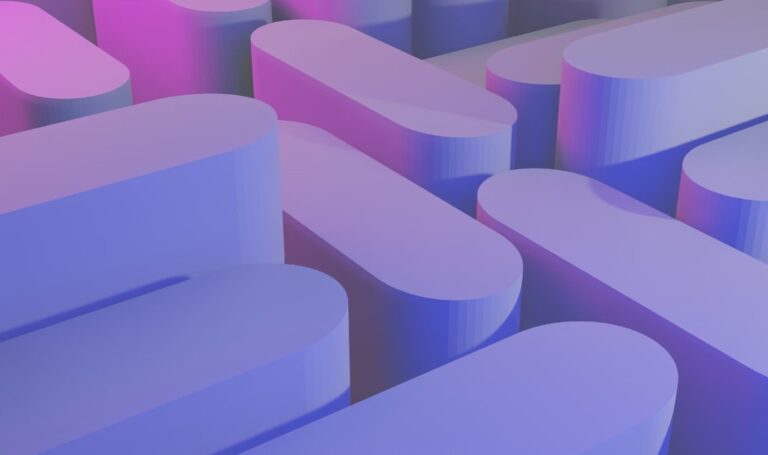3D animation is the process of creating three-dimensional moving images in a digital environment. It involves manipulating 3D models or objects within a computer program to simulate motion and create lifelike visual experiences.
3D animation is widely used in various industries, including film, television, gaming, virtual reality, simulation, and education. It offers a versatile and dynamic way to bring imaginative worlds, characters, and stories to life.
In the dynamic realm of 3D animation, finding the right tools and resources is crucial for bringing creative visions to life. This article delves into some of the best websites that cater to the needs of aspiring 3D animators, offering a combination of powerful software, tutorials, and community support.
Table of Contents
6 best 3D animation websites
1. Blender.org
At the forefront of open-source 3D animation software stands Blender. Blender.org provides a comprehensive suite of tools for modeling, sculpting, rigging, rendering, and animation. With a vibrant community and continuous updates, Blender is a go-to choice for those seeking powerful capabilities without the hefty price tag.
2. Autodesk.com
Autodesk, an industry giant, offers a range of professional 3D animation tools, including Maya and 3ds Max. Maya excels in character animation and visual effects, while 3ds Max is renowned for its modeling and rendering capabilities. Autodesk’s website provides access to trial versions, extensive documentation, and a wealth of tutorials for users at all skill levels.
3. Unity.com
Unity is not just a game development platform; it’s a versatile tool for real-time 3D animation and interactive experiences. Unity.com hosts a treasure trove of resources, from tutorials on creating animations to assets available on the Unity Asset Store. Its intuitive interface and real-time rendering make it a favorite among animators exploring interactive storytelling.
4. Cinema 4D (maxon.net)
Maxon’s Cinema 4D is renowned for its user-friendly interface and powerful features. It caters to motion graphics, visual effects, and 3D animation. Maxon’s website provides resources, tutorials, and a supportive community.
5. Sketchfab.com
Sketchfab is a platform that allows users to discover, publish, and share 3D content. It’s an excellent resource for finding inspiration, learning from others, and even sharing your own 3D animations.
6. TurboSquid.com
TurboSquid is a marketplace for 3D models and assets. While not a traditional animation platform, it’s a valuable resource for finding pre-made 3D models that can be incorporated into your animations.
Key aspects of 3D animation
1. Modeling: Creating 3D models of characters, objects, and environments using specialized software. This involves defining the shape, texture, and structure of the elements that will be animated.
2. Rigging: Adding a virtual skeleton (rig) to 3D models to enable movement and animation. Rigging allows animators to control how different parts of a character or object move in response to animation.
3. Animation: Defining the movement and behavior of 3D models over time. Animators manipulate the rigged models to create realistic or stylized movements, such as walking, running, facial expressions, and more.
4. Texturing and shading: Applying surface textures and defining how light interacts with objects to create realistic or stylized appearances. This step enhances the visual quality of the 3D animation.
5. Lighting: Setting up virtual lighting within the 3D environment to simulate real-world lighting conditions. Proper lighting is crucial for creating a visually appealing and realistic animation.
6. Rendering: The process of generating the final images or frames from the 3D scene. Rendering involves combining the 3D models, textures, lighting, and animation to produce the final visual output.
7. Post-Processing: Applying additional effects, such as color correction, compositing, and special effects, to enhance the final animation.
Benefits of animation content in our world
1. Visual appeal: Animation adds a visually engaging element to content, making it more attractive and captivating for the audience.
2. Effective communication: Complex ideas or messages can be simplified and communicated more effectively through animated visuals, aiding in understanding and retention.
3. Creativity and imagination: Animation allows for limitless creativity and imagination, enabling the portrayal of concepts and stories that may be challenging or impossible in the real world.
4. Versatility: Animation can be applied across various industries, from entertainment (films, cartoons) to education, advertising, simulations, and training programs.
5. Interactivity: In interactive media, such as games and simulations, animation enhances user engagement by responding to user input and creating dynamic, responsive experiences.
6. Global appeal: Animated content often transcends language barriers, making it accessible to a diverse global audience.
3D animation extends beyond entertainment
Animation’s impact extends beyond entertainment, touching various aspects of education, communication, technology, and societal awareness, contributing to a more interconnected and enriched global environment.
Choosing the right 3D animation website depends on your specific needs and preferences. Whether you opt for the open-source flexibility of Blender, the industry-standard tools from Autodesk, or the real-time capabilities of Unity, these websites offer a wealth of resources to nurture your skills and unleash your creativity in the exciting world of 3D animation.












